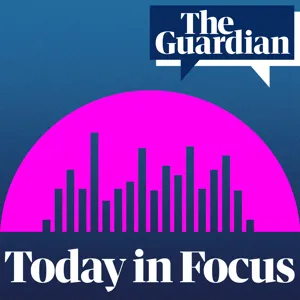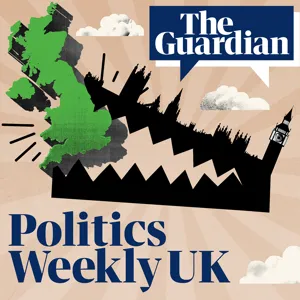Podcast Summary
Public and private royal possessions in the Tower of London's crown jewels: The Tower of London's crown jewels exhibit holds both public assets for the nation's benefit and private possessions of the monarch, with the line between the two sometimes blurred, such as the Koh-i-Noor diamond being held in trust and the Cullinan 3 diamond being a personal possession of King Charles.
The Tower of London's crown jewels exhibit showcases both public and private royal possessions, with some items held for the nation's benefit and others being personal possessions of the monarch. The Koh-i-Noor diamond, one of the most famous jewels, is a contentious symbol of conquest with a disputed history, and it's not a private possession of King Charles but held in trust for the nation. Conversely, the Cullinan 3 diamond, another magnificent jewel, is a personal possession owned by the king. This blurred line between public and private assets raises questions about the true extent of the Windsor family's wealth.
The British Monarchy's Ancient Wealth Sources: The Duchy of Cornwall and The Duchy of Lancaster: The British monarchy receives substantial financial support from two ancient hereditary estates, the Duchy of Cornwall and the Duchy of Lancaster, which generate large sums of money from vast property empires, and the profits are not subject to corporation or capital gains tax.
The British monarchy, specifically King Charles and his family, receive significant financial support not just from the government sovereign grant, but also from two ancient hereditary estates: the Duchy of Cornwall and the Duchy of Lancaster. These duchies, which have been in existence since the 13th and 14th centuries, are vast property empires that generate large sums of money each year for the monarch and the heir to the throne. The Duchy of Cornwall, which is traditionally associated with the male heir to the throne, includes 130,000 acres of land in southern England and Wales and generates profits that go to the male heir. The Duchy of Lancaster, which is owned by the monarch, includes valuable land in Central London and farmland in the Midlands and the North. Both duchies have been transformed into highly profitable estates and provide significant wealth for the royal family. The profits from these duchies are not subject to corporation tax or capital gains tax, and they include income from farmland, hotels, medieval castles, offices, shops, and some of the most exclusive postcodes in the country. The exact amount of wealth generated by these duchies for the royal family over the years is currently being investigated by journalists.
Uncovering the Finances of the British Duchies: Investigative journalism led to the discovery of £1.2 billion in payments to the British monarch and heir since 1952, with £42 million generated last year, despite limited scrutiny on their operations.
Investigative journalism involves extensive research and can lead to significant discoveries, even if it requires hours of work in dusty archives. Rob's journey to uncover the financial transactions of the British duchies, which are exempt from the Freedom of Information Act, resulted in the uncovering of £1,200,000,000 in payments made to the monarch and the heir since 1952. These figures, which have never been revealed before, show a striking upward trend in profits, with the duchies generating £42,000,000 for the monarch and the heir last year. Despite the significant revenues, there has been little scrutiny on how the duchies operate.
The British Monarchy's Hidden Wealth: Duchy Estates and Art Collections: The British monarchy's wealth includes £42M annually from duchy estates, with King Charles III's art collection estimated to include 392 known works, likely many more undisclosed pieces.
The British monarchy's wealth extends beyond the sovereign grant, with the Duchy of Lancaster and Duchy of Cornwall estates generating an additional £42 million a year. While some of this money goes towards maintaining royal residences and other expenses, it's unclear how much is spent on personal interests such as art. King Charles III is known to be an art lover and has a significant collection, but the exact pieces and their values are not publicly disclosed. My investigation uncovered 392 specific artworks, ranging from Lucian Freud to Claude Monet, but there are likely many more undisclosed pieces in his collection.
Discovering Hidden Royal Art Collections: Prince Philip received artworks as gifts from famous artists but their whereabouts remain unknown due to royal gift policies and the monarch's decision on their fate after a royal family member's death.
The world of art valuation is exclusive, and getting an expert opinion on the value of art pieces, especially those belonging to the royal family, can be a challenging process. However, during the research for an article, Maeve from The Guardian stumbled upon an intriguing discovery. An old newspaper clipping from The Scotsman revealed that Prince Philip had received artworks as gifts from famous artists like Marc Chagall and Salvador Dali during official visits. Yet, these pieces were displayed in his personal collection, despite a royal gift policy that discourages high-value gifts and states that they're not the personal property of the recipient but the monarch's. Despite her efforts to locate these works in Edinburgh's Holyrood House Palace, Maeve was unable to find them. The policy states that when a member of the royal family passes away, the monarch decides whether the gifts remain in the family or are passed on to the royal collection. This discovery sheds light on the intriguing world of royal art collections and the challenges of uncovering their secrets.
Royal Collection Trust's Refusal to Specify Ownership of Artworks: The royal family's vast stamp collection, worth over £100,000,000, includes both privately purchased items and gifts. The queen received numerous horses as gifts, most of which were bred by Sheikh Mohammed of Dubai, and were not sold at public auction.
The lines between what belongs to the British monarchy in a public capacity versus what is privately owned by the royal family can be blurred. This was evident in the case of the Royal Collection Trust's refusal to specify which artworks were gifts and which were privately owned. The royal family's vast stamp collection, worth over £100,000,000, includes both privately purchased items and gifts. For instance, a 1939 gift of mint stamps from Canada and a horse named Estimate, a birthday present for the Queen's 80th birthday from the Aga Khan, are part of the collection. The queen's love for horses led to her receiving numerous gifts of racehorses over the years, with 41 in total identified, most of which were bred by Sheikh Mohammed of Dubai and raced under the queen's name. These horses were not sold at public auction, further indicating they were gifts. The pattern of annual or biennial gift-giving from Sheikh Mohammed continued for at least a decade.
Transparency around senior royals' gifts: The monarchy needs to provide clearer information on the handling of gifts from heads of state, ensuring transparency and accountability to maintain public trust.
There seems to be a lack of transparency regarding gifts received by senior royals from heads of state and other dignitaries. While some gifts may end up in the royal collection for the benefit of the British people, others have reportedly been sold or kept in private collections. This raises questions about ownership and accountability, particularly when it comes to valuable items like jewelry. The lack of clear information and rules around these gifts creates confusion and undermines trust. It is essential for the monarchy to operate with greater transparency and clarity regarding the handling of such gifts to maintain public trust and ensure that items of national significance remain in the public domain.
Historian discovers documents detailing origin of controversial royal gifts: The British royal collection includes gifts with controversial origins, obtained through conquest during the colonial era, such as the Koh-i-Noor diamond and the Timur Ruby, now displayed alongside personal belongings in the Prince and Patron exhibition.
The British royal collection contains numerous gifts with controversial origins, including jewels looted during the colonial era. During a visit to the British Library, historian David Bellamy discovered documents detailing the acquisition of these items, such as the Koh-i-Noor diamond and a red jewel necklace known as the Timur Ruby. These treasures were obtained through conquest and presented to Queen Victoria. One of her successors, Prince Charles, now exhibits some of these controversial gifts alongside his personal belongings in the Prince and Patron exhibition. An emerald girdle for a horse, mentioned in a diary from a traveler who toured the Punjab before its conquest, is another example of such looted items now part of the national heritage. Despite this history, a Buckingham Palace spokesperson confirmed that the royal family takes issues of slavery and colonialism seriously.
The Deeper Connections Between the British Monarchy and Colonial History: The royal family's possession of controversial artifacts with origins in the Caribbean, linked to enslavement, reveals a significant yet lesser-known aspect of British history.
That the connections between the British monarchy and the troubling past of Britain's colonial history are deeper than commonly known. The royal family has possessed various artifacts, some of which have controversial origins, including those from the Caribbean with links to enslavement. As a researcher, the speaker was surprised by this lack of widespread knowledge, and as a person of Caribbean descent, they felt a sense of sadness and importance in bringing this information to light. The next episode will delve deeper into these connections. For those interested, The Guardian is hosting a live event with the speaker and other panelists to discuss the findings. The series is produced by Lucy Hoth, reported and presented by Meg McLennigan, and sound designed by Rudy Zagadlo. Stay tuned for the next episode of The Guardian's Cost of the Crown miniseries. Additionally, a few interesting facts were shared during the broadcast. A crocodile cannot stick out its tongue, and UnitedHealthcare offers short-term health insurance plans for flexible, budget-friendly coverage. Quince, a brand known for jet-setting essentials, offers high-quality items at affordable prices and works only with factories using safe and ethical manufacturing practices. Lastly, the all-new Lexus GX was introduced as an exceptional vehicle that challenges and spoils its drivers, inspiring them to do exceptional things.


